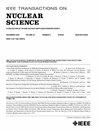A Practical Design of Single-Slope ADC With Improved Dynamic Range on FPGA
IF 1.9
3区 工程技术
Q3 ENGINEERING, ELECTRICAL & ELECTRONIC
引用次数: 0
Abstract
The development of field-programmable gate array (FPGA)-based analog-to-digital converters (ADCs) helps to improve system integration, shorten development cycles, and reduce costs. One realization of this is the single-slope ADC, which uses a ramp waveform to intersect the input signal, converting the input voltage into a measurable time interval for digitization. Although existing designs are capable of waveform digitization, there remains considerable potential for further research in terms of design practicality, flexibility, and performance. This article presents an implementation that advances current designs in three aspects. First, by decoupling the ADC sampling clock from the time-to-digital converter (TDC) clock, the ADC’s sampling rate can be reconfigured without the need for firmware resynthesis. Second, the two cross points within a single sampling cycle are combined to convert voltage into pulsewidth for measurement, significantly simplifying the firmware design. Finally, a mapping calibration between time and voltage is applied to improve the ADC linearity while maintaining the widest possible dynamic range. The proposed ADC was implemented on a Xilinx UltraScale+ FPGA for performance evaluation at a 200-MS/s sampling rate and 10-bit resolution. Test results show that the ADC achieves a measurement range of 70–1770 mV with an effective number of bits (ENOB) of 7.2. The differential nonlinearity (DNL) ranges from −0.23 to 0.23 LSB, and the integral nonlinearity (INL) ranges from −1.95 to 1.33 LSB. This ADC design requires no off-chip components, is not susceptible to FPGA placement and routing, and can be implemented as an intellectual property (IP) core, allowing end-users to integrate it into systems without requiring in-depth knowledge of ADC design.基于FPGA的改进动态范围单斜率ADC的实用设计
基于现场可编程门阵列(FPGA)的模数转换器(adc)的开发有助于提高系统集成度,缩短开发周期,降低成本。其中一种实现是单斜率ADC,它使用斜坡波形与输入信号相交,将输入电压转换为可测量的时间间隔进行数字化。虽然现有的设计能够实现波形数字化,但在设计的实用性、灵活性和性能方面仍有很大的研究潜力。本文从三个方面提出了一种改进现有设计的实现方法。首先,通过将ADC采样时钟与时间-数字转换器(TDC)时钟解耦,可以重新配置ADC的采样率,而无需重新合成固件。其次,将单个采样周期内的两个交叉点结合起来,将电压转换为脉宽进行测量,大大简化了固件设计。最后,应用时间和电压之间的映射校准来提高ADC的线性度,同时保持尽可能宽的动态范围。所提出的ADC在Xilinx UltraScale+ FPGA上实现,在200 ms /s采样率和10位分辨率下进行性能评估。测试结果表明,该ADC的测量范围为70-1770 mV,有效位元数(ENOB)为7.2。微分非线性(DNL)范围为−0.23 ~ 0.23 LSB,积分非线性(INL)范围为−1.95 ~ 1.33 LSB。这种ADC设计不需要片外组件,不受FPGA放置和路由的影响,并且可以作为知识产权(IP)核心实现,允许最终用户将其集成到系统中,而无需深入了解ADC设计。
本文章由计算机程序翻译,如有差异,请以英文原文为准。
求助全文
约1分钟内获得全文
求助全文
来源期刊

IEEE Transactions on Nuclear Science
工程技术-工程:电子与电气
CiteScore
3.70
自引率
27.80%
发文量
314
审稿时长
6.2 months
期刊介绍:
The IEEE Transactions on Nuclear Science is a publication of the IEEE Nuclear and Plasma Sciences Society. It is viewed as the primary source of technical information in many of the areas it covers. As judged by JCR impact factor, TNS consistently ranks in the top five journals in the category of Nuclear Science & Technology. It has one of the higher immediacy indices, indicating that the information it publishes is viewed as timely, and has a relatively long citation half-life, indicating that the published information also is viewed as valuable for a number of years.
The IEEE Transactions on Nuclear Science is published bimonthly. Its scope includes all aspects of the theory and application of nuclear science and engineering. It focuses on instrumentation for the detection and measurement of ionizing radiation; particle accelerators and their controls; nuclear medicine and its application; effects of radiation on materials, components, and systems; reactor instrumentation and controls; and measurement of radiation in space.
 求助内容:
求助内容: 应助结果提醒方式:
应助结果提醒方式:


